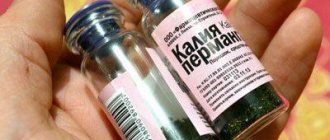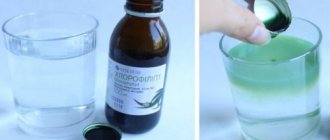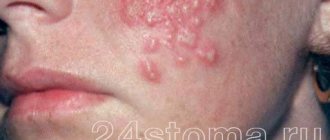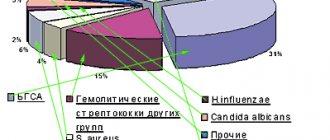Many parents have encountered the problem of a red throat in their child, which in most cases indicates inflammation. In this regard, it is very important to correctly determine the cause that caused the pathological process, since the effectiveness and success of treatment directly depends on this. And the first thing the otolaryngologist has to find out is: what is the nature of the disease - viral or bacterial?
We will tell Kaliningraders about all the nuances of the problem: the causes of throat hyperemia, possible diseases, and also how to distinguish a virus from a bacterial infection.
How can you tell if your baby has a sore throat?
First of all, it is necessary to examine the mucous membrane of the larynx. Hyperemia (redness) of the throat is an obvious, but not the only symptom. In addition, other clinical manifestations of inflammation may be present, such as:
- swelling of the tonsils and the presence of plaque on them;
- difficulty and pain when swallowing;
- redness of the visible parts of the throat;
- hoarse voice and sore throat;
- dry, barking cough;
- nasal discharge and nasal congestion;
- enlargement of the submandibular lymph nodes;
- loss of appetite and general weakness;
- headache and fever.
If some of the above symptoms occur, then parents should contact an otolaryngologist to find out the true cause of the inflammation. With adequate treatment, the prognosis is usually favorable.
Causes of redness in the throat
In most cases, redness of the mucous membrane of the throat is combined with pain when swallowing and occurs as a result of the development of tonsillopharyngitis1. Isolated damage to the pharynx (pharyngitis) and pharyngeal tonsils (tonsillitis) is rare, and there is nothing surprising about this: the pharynx and tonsils are located close to each other1,2,4.
Most often, inflammation of the pharynx is accompanied by acute respiratory infections (ARI). In preschool children, in 89% of cases, ARI is caused by viruses 1. The mucous membrane of the pharynx and tonsils is a favorite place for rhinoviruses and adenoviruses, as well as parainfluenza viruses. Less commonly, its inflammation is caused by the Epstein-Barr virus, enterovirus (Coxsackie virus), and herpes simplex virus1,2,5.
The viral nature of tonsillopharyngitis predominates in children aged 1 to 5 years3. Starting from the age of five, children more often suffer from bacterial forms of the disease. Moreover, in 20-30%1,2,4,5,7 (according to some data, in 75%3) of young patients, doctors find a dangerous bacterium in the throat and tonsils - beta-hemolytic streptococcus of group A2,3,4,5,6 .
Other microbes can also cause redness in the throat: mycoplasma, chlamydia, staphylococcus and Candida fungi2,3. Sometimes tonsillopharyngitis becomes one of the manifestations of a general disease2,3: diphtheria, scarlet fever, infectious mononucleosis, tularemia, typhoid fever or even HIV3. Treatment will be different in each case.
What makes your throat red?
In 80% of cases, the cause of redness of the throat is viruses and bacteria, less often fungal infections. However, it makes sense to voice non-inflammatory causes. These include:
- mechanical microtrauma of the mucous membrane;
- eating hot or coloring foods;
- contact with allergens or smoke;
- prolonged vocal load.
Without a doubt, chronic diseases of the nose and nasopharynx contribute to the spread of infection when inflammation spreads to the throat (the so-called “postnasal drip”). In such cases, it is important to promptly treat rhinitis and sinusitis, preventing the diseases from becoming chronic or protracted.
What are the indications for adenoid removal (adenotomy)?
Adenotomy
- Cost: 50,000 - 80,000 rubles.
More details
- Poor nasal breathing during the period when the child is healthy. This is dangerous because the child’s body experiences hypoxia (oxygen starvation). Insufficient oxygen supply to the body can lead to a delay in the psychomotor development of the child; the child may be adynamic, or, conversely, hyperactive. Due to the fact that the child constantly breathes through his mouth, the facial skeleton (adenoid face) is formed incorrectly. The quality of life of such children certainly suffers.
- Hearing loss or frequent inflammation in the ears are also direct indications for adenotomy. The mechanism of occurrence of this pathology occurs as follows. Where the adenoids are located, there is the mouth of the auditory tube (Eustachian tube) - an organ that connects the middle ear (what is located behind the membrane) and the nasopharynx itself. If, with your mouth closed, you pinch the tip of your nose and exhale into your nose, then air will enter your ears due to this very organ. Due to the close anatomical location of the adenoids and the auditory tubes, the inflammatory process from the adenoids can move to the mouth of the auditory tubes, causing in turn inflammation and, as a consequence, dysfunction of the auditory tube. In addition to the chronic inflammatory process in the auditory tubes, when adenoids grow, they can cover the mouths of the auditory tubes, leading to the development of adhesive otitis media or the formation of exudative otitis media (fluid in the middle ear). Frequent purulent-inflammatory phenomena in the cavity of the middle ear (sound transmitting apparatus) lead to the formation of adhesions and scars between the auditory ossicles, which subsequently leads to hearing loss in adulthood. In these cases, between the organ of hearing and the natural filter in the form of adenoids, we choose the organ of hearing.
- It is also necessary to part with adenoids if the child often suffers from adenoiditis, which, with local treatment, does not produce significant positive dynamics, but only leads to recovery for a short period of time. This is a consequence of the fact that the adenoids do not carry out their immune function, they have worn out themselves as a natural filter, are a source of chronic infection and need to be sanitized (removed). Adenoiditis can also often be associated with herpes viral infection (Epstein-Barr virus, cytomegalovirus, type 6 virus), which live in the lymphoid tissue, leading to a decrease in immunity, including local immunity. If your child suffers from ARVI more than 6 times a year, there is cervical lymphadenitis (enlarged lymph nodes), conservative treatment of adenoiditis helps for a short time, in this case you need to contact a pediatrician for further examination for a herpes viral infection. When this group of viruses is detected, adequate treatment is prescribed, and if positive dynamics are observed in the adenoids during therapy, the child should be observed and there is no need to rush into surgery.
But if, together with treatment from a pediatrician, no effect is observed, then, according to the law of surgery, the tissue that prevents a person from living is removed.
How to distinguish a viral infection from a bacterial one?
Let's start with the fact that bacterial infection is much less common than viral infection. In such cases, the disease is more complicated than a regular ARVI, and lasts from 5 to 14 days. Typical signs of bacterial attachment include:
- high body temperature;
- swollen lymph nodes;
- thick yellow-green sputum produced when coughing;
- the appearance of white plaque on the pharyngeal tonsils;
- clinical symptoms are expressed locally (ear, throat or nose).
The virus is characterized by:
- hyperemia of the throat is combined with sore throat and runny nose;
- expectorated sputum is clear and flowing;
- the appearance of a rash (with measles, rubella and scarlet fever);
- general weakness and aches throughout the body.
There are also significant differences regarding the treatment regimen. If the inflammation is bacterial in nature, antibiotics are indicated; only they can solve the problem. Accordingly, with viruses, antibacterial drugs will be useless; in such cases, it is necessary to take antiviral drugs. Therefore, it is very important to consult a doctor who will identify the true cause of the red throat and prescribe the right solution.
What to do and who to contact?
If your child has a red throat, you need to visit a doctor in a timely manner. You can call a pediatrician at home if redness of the mucous membranes of the throat is accompanied by a deterioration in the baby’s general condition.
A red throat and fever in a child are a pathological duo of symptoms, most often caused by the introduction of an infection into the body. The pediatrician will determine whether it is viral or bacterial. You should know that with some diseases, such as scarlet fever, measles, etc., a rash appears on the skin of children, and with stomatitis of various etiologies, elements of the rash can also be located on the mucous membranes in the mouth. It is difficult to understand this painful diversity on your own, so you should not rely on your knowledge in treating colds. Only pediatricians can make a correct diagnosis.
The first medical authority is the pediatrician’s office. It is he who will determine whether you need additional consultations with a pediatric otolaryngologist or allergist, and if necessary, will write a referral to them.
Diagnostic methods
Diagnostics consists of examining the patient, collecting anamnesis and a comprehensive examination, including:
- pharyngoscopy - visual examination of the pharynx;
- mirror laryngoscopy – examination of the larynx using a laryngeal mirror;
- endoscopic method - examination of the larynx using an endoscope;
- clinical blood test;
- bacteriological method (culture of mucus from the oropharynx will help determine the causative agent of the disease).
When examining a small patient, the doctor assesses:
- general view of the mouth, throat and larynx;
- color of mucous membranes and presence of swelling;
- size and color of tonsils;
- condition of the submandibular lymph nodes.
As soon as the causative agent of the disease is known (virus, bacteria, fungus or allergen), the doctor will prescribe appropriate treatment. If necessary, the otolaryngologist will refer the child to a specialized specialist.
Grodno Regional Children's Clinical Hospital
Details Published 01 July 2016
Pulmonologist (head of department) of the Healthcare Institution "GODKB", chief freelance specialist of the health department of the Grodno Regional Executive Committee for Pulmonology Marushko I.V. A child has a red throat. Where to run and what to do? Many people probably know: often in order to assess your child’s immunity status you just need to look at his throat. A child’s red throat is a warning sign that should not be ignored, but you need to know how to deal with this scourge. How to look at a child's throat? To do this you will need a thoroughly washed teaspoon. Stand in front of the window, ask the child to open his mouth wide and gently press the handle of the spoon onto his tongue. Do not push it too deep, this may cause a gag reflex. Causes and treatment tactics. A red throat and fever can be due to either a viral or bacterial infection. To determine treatment tactics, this must be accurately established, because some drugs can help, while others will be completely useless. Selecting medications for children is not easy, since many of the drugs that are successfully used by adults are contraindicated for children, or do not have all the necessary properties. In most cases, throat diseases cause erosive damage to the mucous membrane of the oropharynx and the appearance of epithelial defects. The faster these defects are eliminated, the faster the unpleasant symptoms will disappear and recovery will occur. Conventional drugs are not able to restore the damaged integrity of the mucous membranes of the oropharynx. For ARVI, antibiotics will be absolutely useless. For viral infections, antiviral and immunomodulatory treatment must be used. You also need to relieve symptoms. To reduce the temperature, you can give antipyretics and restore water and electrolyte balance. If the temperature is very high (above thirty-eight), then it is imperative to bring it down. However, a temperature of up to thirty-eight indicates the body’s fight against infection; in addition, its own interferon is produced. When using all medications, it is worth remembering that some can cause allergic reactions. At the same time, in addition to antipyretic drugs, it is recommended to do the simplest manipulation - open the balcony (but so that there is no draft), and leave the baby in relatively light clothes (do not wrap them up under any circumstances). In this situation, the elementary laws of physics will work, and the body will begin to give off heat to the environment. This will cause the temperature to drop much faster. Don't follow grandma's methods and put your baby under a warm blanket. This situation will only lead to the conservation of heat, but not to its release. If a child complains of severe hyperthermia in one area, you can wrap a container of cold water in a towel and apply it to the body. To maintain optimal water balance, the child needs to be given water more often, since at high temperatures the body experiences dehydration - liquid comes out through sweat. It is best if it is compotes, teas with medicinal herbs, juices, fruit drinks, jelly. To treat a red throat caused by a viral infection, preference should be given to irrigation and rinsing. You can gargle with decoctions of medicinal herbs - chamomile, sage, eucalyptus, calendula, coltsfoot, but only after consulting a doctor. A very effective remedy is a solution of soda, salt and iodine. You need to gargle with this solution every half hour. If the child is too small and does not know how to gargle or simply resists, then you can give sucking tablets - they taste sweet and soften the throat well, eliminating redness. If a sore throat is diagnosed, consult a doctor immediately. Do not delay treatment for sore throat, as this disease can lead to serious complications. Older children can lubricate their throats with oils (eucalyptus or sea buckthorn), Lugol's solution, Chlorophyllipt, Iodinol. Do not forget that oils should be used only if the child has no allergic manifestations to these oils. If a child has a red throat due to a bacterial infection, then the situation here may indicate an incipient sore throat. Usually the process increases quite quickly, a coating of gray-white plaques appears on the tonsils, the temperature rises, but without a runny nose or cough. This is the typical onset of a sore throat. In this case, the child needs to be shown to a doctor to begin a course of antibiotic treatment. Even after reading my article, do not resort to self-medication; in any case, immediately consult a doctor.
Methods for treating throat diseases
Therapeutic measures, as in the treatment of any other diseases, involve solving two main problems:
- Elimination of intoxication and local syndromes.
- Prevention of the development of complications from other organs and systems.
As a rule, when treating red throat, drug treatment is used, taking into account the age of the child and the severity of the pathology. Depending on the etiology of the identified disease, the following drugs can be used:
- antiviral;
- antibacterial;
- antifungal;
- antiseptic;
- antihistamines;
- antipyretics and painkillers;
- immunomodulators and vitamins.
Treatment can be effectively complemented by physiotherapy: UV and UHF therapy, quartz, electrophoresis. Note that in 90% of cases, infectious diseases of the upper respiratory tract have a viral etiology, so antibiotic therapy is indicated only if a bacterial infection is detected. Only a doctor can determine it. We remind parents once again that it is categorically unacceptable to prescribe antibiotics on their own.
Treating a red throat in a child
Drug treatment is prescribed only by a doctor. The task of parents in this case is to methodically implement the recommendations received.
The success of treatment depends 90% on how the baby is cared for at home. The room where the child is located must be wet cleaned and ventilated daily. The diet deserves special attention. If the neck is inflamed, food for the child should have a soft consistency and room temperature. You should not give your child crackers or irritating drinks; replace them with fruit drink or tea.
Many parents force their child to suck honey during illness - this is not always correct. The inflamed mucous membrane of the pharynx can be injured by grains of honey, and you will experience a worsening of symptoms. You can give honey if the redness of the throat is not accompanied by pain when swallowing.
To relieve pain, you can put a warm compress on the child's neck. But remember that this procedure is not carried out at high temperatures.
Recovery criteria
The following signs indicate successful treatment and speedy recovery:
- normalization of temperature;
- absence of signs of intoxication and asthenic syndrome;
- redness and swelling of the oropharynx disappeared;
- the size of the lymph nodes decreased.
Note that it is equally important during the treatment process to strictly follow medical recommendations, which consist of following bed rest, a gentle diet and drinking plenty of fluids.
We remind Kaliningrad residents that you can make an appointment with a pediatric otolaryngologist by filling out a preliminary application on our website or by calling: +7 (4012) 357-773 or +7 (4012) 973-100.









